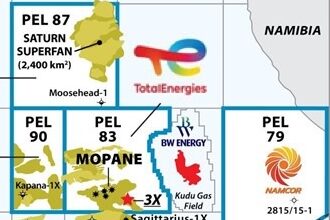To attract and keep young talent, drilling companies must pave career path, provide tools for advancement
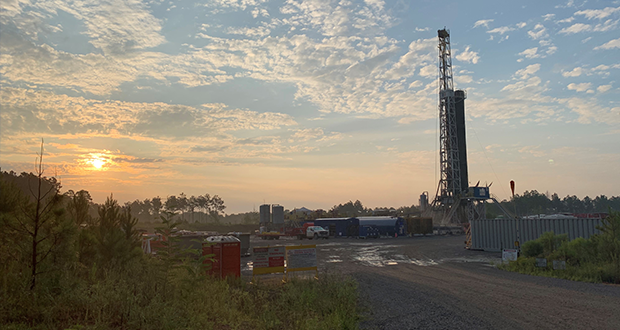
Independence Contract Drilling’s Anthony Gallegos: Industry will also have to embrace focus on returns instead of growth in order to attract, retain investors
By Linda Hsieh, Editor & Publisher
Anthony Gallegos is President and CEO of Independence Contract Drilling (ICD).
Looking at the 30-plus rigs in ICD’s fleet, what do you see as the biggest challenges that you face as a land rig contractor?
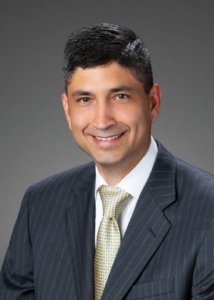
It’s not unique to ICD, but the biggest challenge today is the workforce – attracting, developing and retaining a skilled and motivated workforce.
A lot of young people today don’t necessarily want to go into an industry like ours, where it can be very labor intensive. You work in the elements, and the work sites are often in remote locations far away from home.
In order to attract and retain young talent, I think there has to be alignment from the rig manager all the way up to the CEO, and you need to provide your employees with a pathway and tools for career advancement. We have a very strong economy in the US with very low unemployment. We have to recognize that we’re competing with many other industries for people.
It’s also widely recognized that young people today tend to view environmental stewardship as a top issue. How can drilling contractors show them that this is an industry where they can build careers they’re proud of?
At all levels – as individuals, as companies and as an industry – we have to help society understand that we do care about the environment. We have to show that our work in providing oil and gas adds value to people’s way of life and to the economy in general.
Personally, I take advantage of any opportunity that I have, whether it’s at a restaurant or on an airplane, to tell people about what we do and how we do it. Sometimes people don’t want to talk about it, but a lot of times those conversations will end with them saying, “I didn’t know that.”
We’re a very proud industry, but we need to get better control of the message and make sure people think about energy in the proper context.
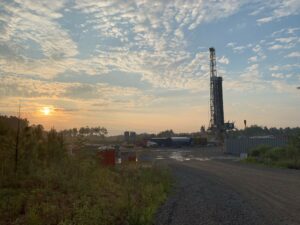
I’ve been in this industry for almost 30 years, and I can tell you without a doubt that we are more focused than we’ve ever been on working safely and in a way that doesn’t harm the environment.
For example, at ICD, most of our rigs are now bifuel capable, which means they burn natural gas and diesel. The emissions generated by using natural gas as engine feedstock minimizes our environmental footprint. We have also operated rigs using highline power, where we plug into the electricity grid, as an effort to reduce carbon emissions, amongst other benefits.
Evaluating emissions and environmental impact are now automatically factored into our decisions when we specify new and replacement equipment and when we specify the maintenance of that equipment – both what maintenance is done and how that maintenance is performed. ICD and our industry are very focused on doing right by the environment. By this I mean minimizing our impact, whether that be in reducing carbon emissions or minimizing truck traffic associated with moving our rigs. Unfortunately, I’m not sure the general population understands that.
What is your perspective on the evolution of automation and digitalization in the land drilling business?
For the most part, the current focus is on drilling optimization. Digital technologies are allowing us to marry real-time downhole data with our AC equipment and VFD drives to optimize parameters, such as weight on bit, downhole torque and RPM. The goal we’re working toward is to drill the well as fast and as consistently as possible. Because of the large number of wells that our customers drill, they can realize significant value by eliminating wells that are outliers. That goal, combined with faster rates of penetration, currently make up the majority of the value proposition associated with embarking on the various technology initiatives under way within our industry.
Would you say that’s where most of the performance improvements have been coming from?
If you’re talking about the last eight to 10 years, then I would argue that a lot of the improvement has come at the expense and investment of drilling contractors in upgrading their drilling rigs. We invested in adding walking systems, higher-torque top drives and 7,500-psi mud systems, and now we’re adding third mud pumps and fourth generators to a lot of our rigs.
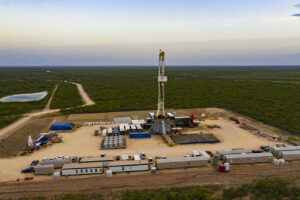
It’s because of those investments that our rigs are more productive than they’ve ever been, and yet we’re not necessarily getting compensated for that. At some point, something will have to change, because we need to be healthy financially in order to be a viable industry long term.
Are changes needed to the traditional dayrate model then?
I think we need to move toward contracts that incorporate some type of performance-based compensation, where a part of the economic value that is being created vis-a-via the capital investments we have made can be provided back to the drilling contractor.
At ICD, we have entered into some performance-based contracts where we earn a dayrate premium when we meet or exceed specific metrics, usually tied to days vs. depth targets. However, with those types of contracts, you have to be careful about any risk that you may be asked to accept.
As a drilling contractor, we don’t have as much information about the location and the reservoir as the operators do, and we don’t select the well design, or the mud or bits that are used to drill the well. Most of the time, we’re working on a daywork basis at our customers’ direction, so any risk that we accept must be commensurate with the role that we play in the overall process.
What do you see for the next generation of rigs, whenever the industry is ready to build again?
If you believe, like I do, that the future of the US land business is in the unconventional plays, then you know that high-density pad drilling is here to stay. That means your rigs will have to be pad optimal so they effectively drill the laterals required and can move long distances or along multiple well rows on the pad, in a way that is safe, environmentally sensitive and efficient. To do that, you will need high-pressure and high-torque drilling equipment, a walking system, and a rig that is engineered to be disassembled, shipped and reassembled in a safe and efficient manner.
Other than that, I think environmental impact will be a main consideration. They will also have to be versatile in terms of being able to drill different types of wells. They will likely need to have at least three mud pumps and four generators, as well as optimization software that leverages the data generated downhole and the VFD-controlled surface equipment.
How is our industry doing in terms of using data analytics to improve drilling performance?
I believe our industry has lagged other industries in the use of data, but we’re catching up fast. At ICD, we’re gathering, tracking and analyzing all types of data, and we’re proactively sitting down quarterly with our customers to go through that data. A lot of times they have their own data, and it’s a good opportunity for us to analyze, for example, why one crew’s cycle times are different than another crew, and how can we get them to perform at the same high level?
In the current market, our customers are very aware of their CAPEX spend, and they have to make sure they’re spending it wisely. Performance data are big factors in deciding which rigs get released and which rigs stay with a customer when they are reducing drilling activity.
What about the benefits of leveraging steady state, where they try to keep the same rig, same crews?
It sure would be good for our industry to get to some sort of steady state. Unfortunately, I think we’re in a world where we’re going to keep experiencing rig count variations up and down over the near term. In the second half of last year, for example, ICD and the industry experienced a decline in the US land rig count. This happened because operators experienced budget exhaustion because initial CAPEX budgets were front-end loaded and were not adjusted mid-year even though the base commodity did better than most people expected.
The sharp ups and downs are very unfortunate because we lose the benefit of the efficiencies that you work so hard to achieve during a continuous drilling campaign with the same operator. The efficiencies are on both sides of the relationship, so we all lose when we stop and start drilling campaigns.
I’ve been through several of these ups/downs in my career, but this is the first one that I’ve experienced where there wasn’t a big decline in the commodity price. We saw a 25%-plus decline in contracted rig count over 2019, all precipitated by changes in customers’ spend.
What’s driving that change in spending?
The change has been brought about by how investors, debt capital providers and operators think about their business from a fiscal standpoint.
There’s been a lot of frustration within the investment community. The focus in US unconventionals had always been on growing production. But going forward, I think everyone is going to be judged more on their financial returns and how effectively they deploy their capital. It’s a big change in mindset for our industry but one that we will have to embrace in order to attract and retain investment in E&P and the oilfield service industry.
How do you view the long-term health of our industry?
First of all, I think that everything we’re doing on the technology side is very exciting. We’re going to be leveraging not only what our industry can do but also other industries’ technologies, which will allow us to be more productive and more efficient.
Secondly, we have to think about the demographic changes under way in the workforce and get creative when outlining training, development and retention programs. The generation entering the workforce today comes to us with a very different set of experiences, skills and habits. We have to take tried-and-true methods for managing work and tailor them to this incoming generation.
Lastly, the world’s population continues to grow, especially in countries where they need energy for basic necessities. That means energy demand will continue to grow, which will drive growth in our business. In the longer term, I’m confident that the supply and demand for oil will come into better alignment. There’s been an underinvestment in upstream E&P over the past few years, and once that shows up in declining production, we will likely see oil prices that will be more supportive of our industry.
Until then, we have to continue to embrace change, leverage the skills in our industry and across other industries, and develop systems and processes that will allow the incoming generation of oilfield workers to work safely and find career satisfaction. DC





